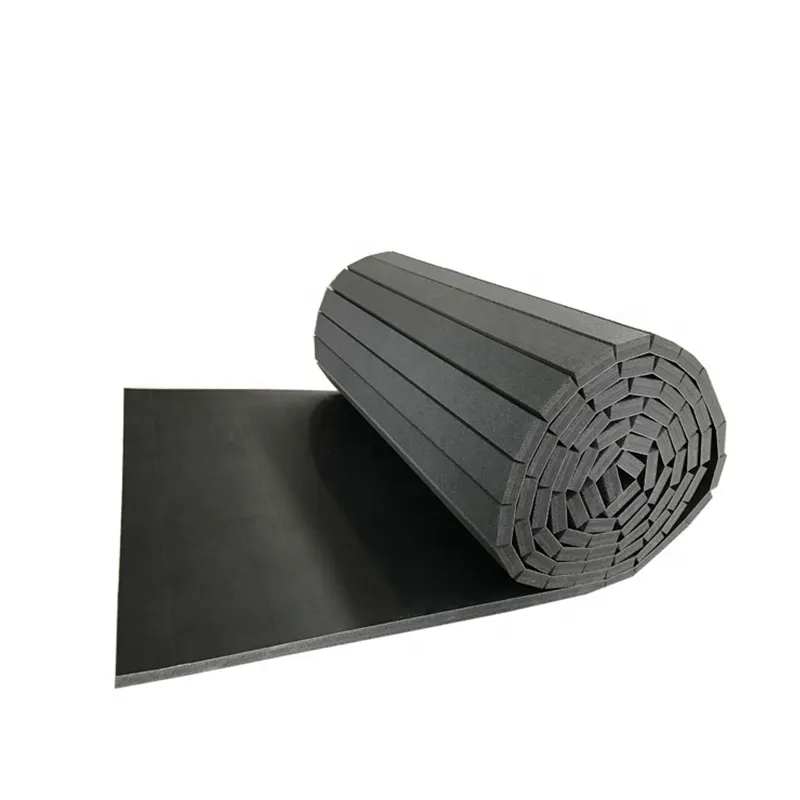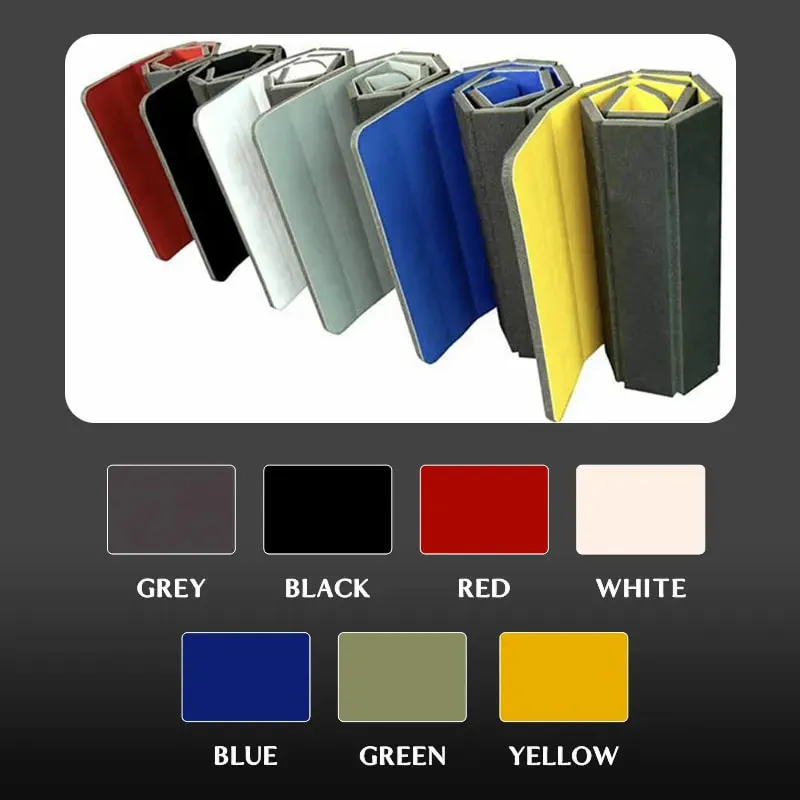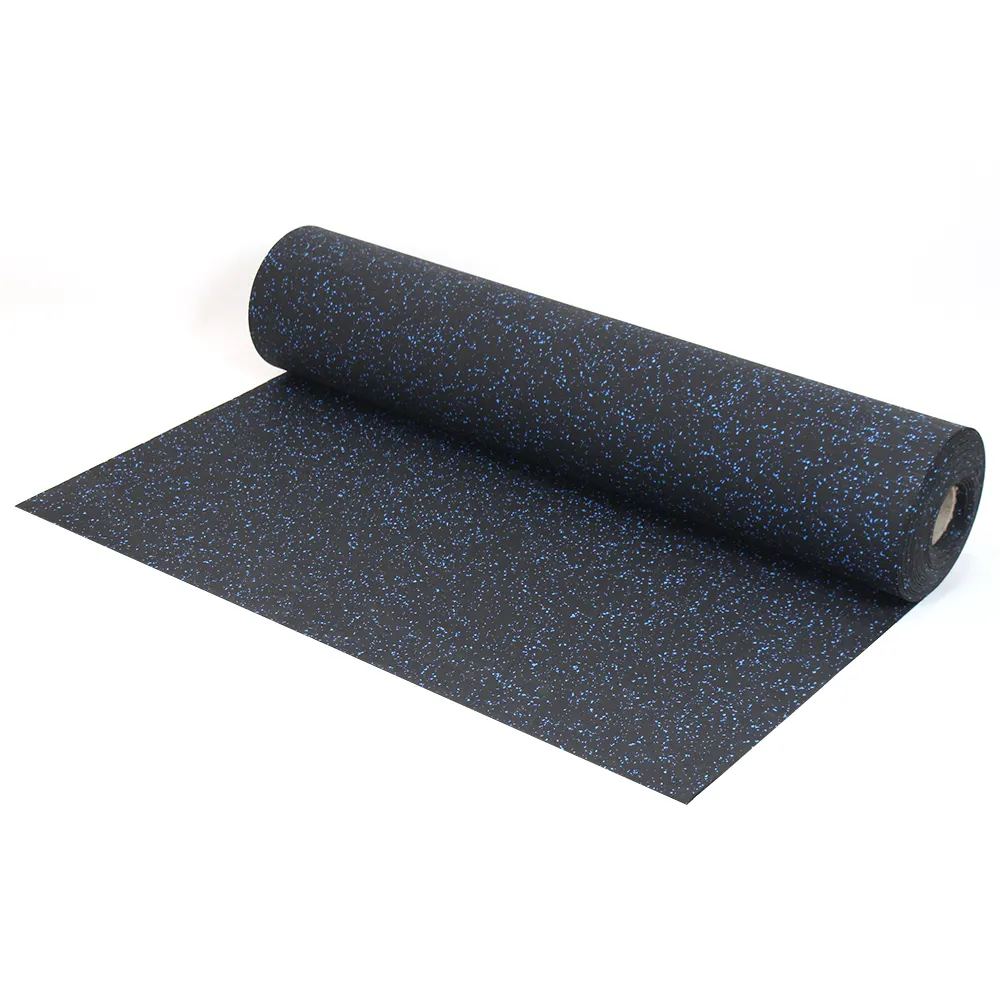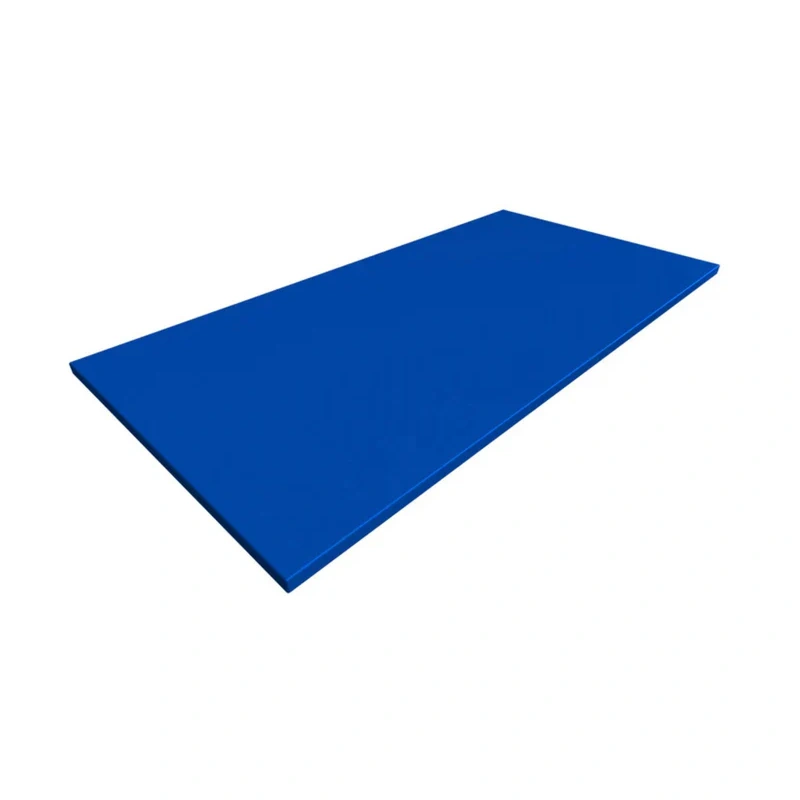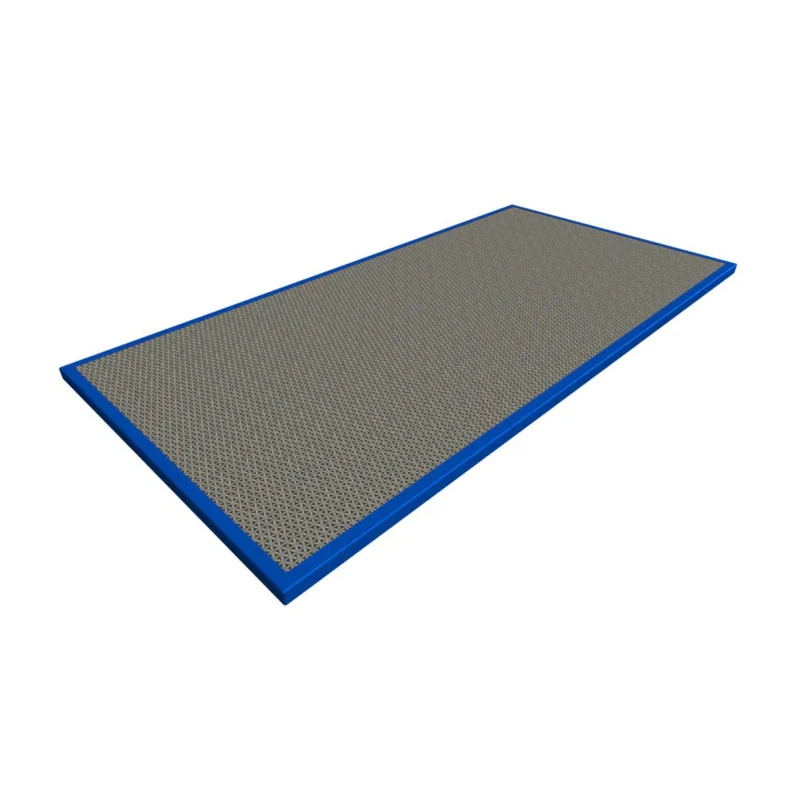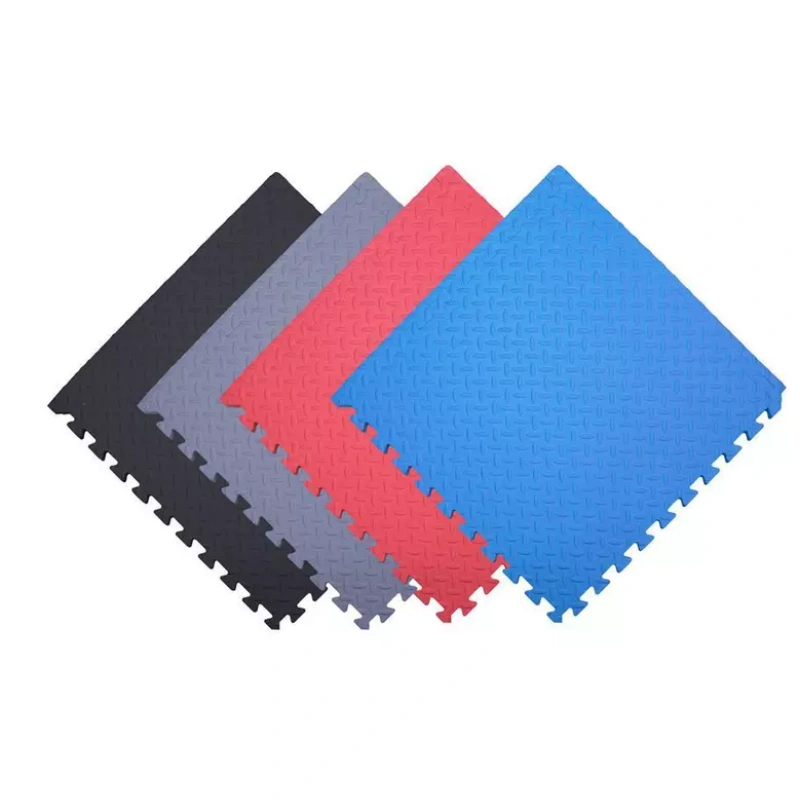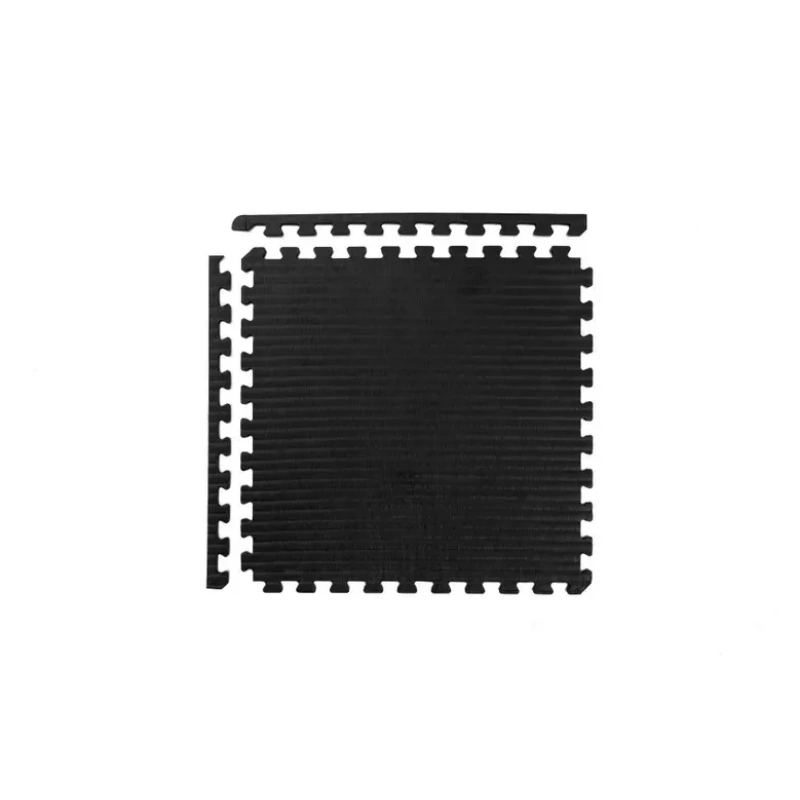- Home
- Gym Flooring
Gym Flooring
Understanding Your Commercial Gym Flooring Needs
Before diving into specific types of flooring, consider the various needs of your facility:- Workout Intensity: Different flooring types are better suited for high-impact activities, weightlifting, cardio, or bodyweight exercises.
- Specific Training Areas: Dedicated zones for weightlifting, functional training, group fitness, and cardio may require different flooring solutions.
- Budget: Flooring options vary in cost, so it's essential to consider your budget while prioritizing quality and durability.
- Aesthetics: The flooring contributes significantly to the overall look and feel of your gym.
- Noise Reduction: Certain flooring options excel at absorbing sound and vibrations, which is crucial in busy commercial environments.
- Subfloor Protection: The primary function of gym flooring is to protect the underlying surface from damage.
Types of Commercial Gym Flooring:
Rubber Flooring
Rubber flooring remains a popular and versatile choice for commercial gyms due to its durability, shock absorption, slip resistance, and water resistance. It's available in various formats:- Rubber Rolls: Ideal for covering large areas, offering a virtually seamless appearance, excellent durability, and sound absorption. Perfect for general workout areas, cardio zones, and spaces with heavy foot traffic.
- Rubber Tiles: Known for their easy DIY interlocking installation, affordability, and durability. Great for weightlifting areas, functional training zones, and home gyms within commercial facilities. Offer good shock and sound absorption and allow for easy replacement of individual tiles.
- Rubber Mats: A fantastic solution for small, dedicated weightlifting platforms or specific exercise areas. Portable and easy to install, providing excellent traction, shock absorption, and noise reduction.
- Ultra-Durable: Thick rubber material designed for commercial gyms can endure years of heavy use.
- Simple Installation in Large Spaces (Rolls): Effortlessly cover extensive areas with just a few rubber rolls.
- Easy to Clean: Maintain a hygienic environment with simple vacuuming or damp mopping.
- Environmentally Responsible: Many of our rubber flooring options are made from recycled rubber manufactured in the USA. Look for our FloorScore® Certified options for safety assurance.
- Virtually Seamless Appearance (Rolls): When properly aligned, the seams between rolls are nearly undetectable, creating a polished look.
- Sound and Shock Absorbing: Effectively absorbs impact from dropped heavyweights and equipment, reducing noise in busy commercial gyms.
- Anti-Microbial: Water-resistant rubber material prevents bacteria from trapping within or beneath the flooring.
- Easy DIY Installation (Tiles): The interlocking puzzle piece design allows for simple loose-lay installation without the need for adhesives.
- Lighter than Rubber Rolls (Tiles): Easier to handle and move individual tiles during installation or rearrangement.
- Simple Replacement (Tiles): If a tile gets damaged, you can easily replace just that tile instead of the entire floor.
- Great for Small Spaces (Mats): Ideal for covering specific areas without needing to invest in full room flooring.
- Portable (Mats): No permanent installation is required, allowing for easy rearrangement of your gym setup.
- Weight (Rolls): Rubber flooring rolls can be quite heavy, potentially requiring assistance for self-installation.
- Tedious Installation for Large Spaces (Tiles): While easy, installing tiles in very large areas can be more time-consuming compared to rolls.
- Seams (Tiles): The seams between tiles can potentially allow liquids to seep through to the subfloor. The appearance is also slightly less seamless than rolled rubber.
- Price (Tiles & Mats): Tiles and mats generally have a higher cost per square foot compared to rolls.
- Not Appropriate for Large Spaces (Mats): Rubber rolls are generally more cost-effective and easier to install for covering large areas.
Gym Turf
Gym turf is another excellent option for commercial fitness centers, offering a unique feel and functionality for various exercises. It's particularly popular for:- Sled Pushes and Pulls: The low-friction surface allows for effective sled training.
- Functional Training: Provides a durable and cushioned surface for agility drills, plyometrics, and other dynamic movements.
- CrossFit Areas: Often used in CrossFit boxes for its versatility and resilience.
- Aesthetic Appeal: Adds a visually distinct and athletic look to your facility.
Other Commercial Gym Flooring Options:
- Foam Flooring: Suitable for specific areas like stretching zones, yoga studios, or kids' play areas within a larger facility, offering excellent cushioning.
- Vinyl Flooring: Can be a durable and easy-to-clean option for certain areas like group fitness studios or reception areas.
Choosing the Right Thickness for Your Commercial Gym Flooring
The appropriate thickness depends on the intended use of the area:- 8mm: Suitable for general fitness areas, bodyweight exercises, and lighter cardio equipment (rubber).
- 3/8": A popular all-around thickness for commercial gyms, providing a good balance of durability and shock absorption for various activities (rubber). Our most popular thickness for gym turf is 3/4”.
- 1/2” – 3/4”: Ideal for weightlifting areas and zones with heavier equipment to provide enhanced subfloor protection (rubber).
- 1” +: Recommended for Olympic-rated weightlifting platforms and areas where heavy weights are frequently dropped (rubber). For gym turf designed for heavy sled use, consider thicker options as well.
Installation Options for Commercial Gym Flooring
The installation method will depend on the type of flooring and your specific needs:- Loose-Lay: Often suitable for rubber rolls, thicker rubber tiles, some gym turf, and foam tiles, relying on the weight of the material to stay in place. Offers flexibility for future adjustments.
- Double-Sided Tape: Provides a more secure temporary installation for rubber rolls and mats, allowing for easier removal if needed.
- Glue-Down: Recommended for rubber rolls, some turf installations, and in high-traffic areas or where maximum stability is required. This is a permanent solution.
- Interlocking: The most common method for rubber and foam tiles, offering easy DIY installation.

